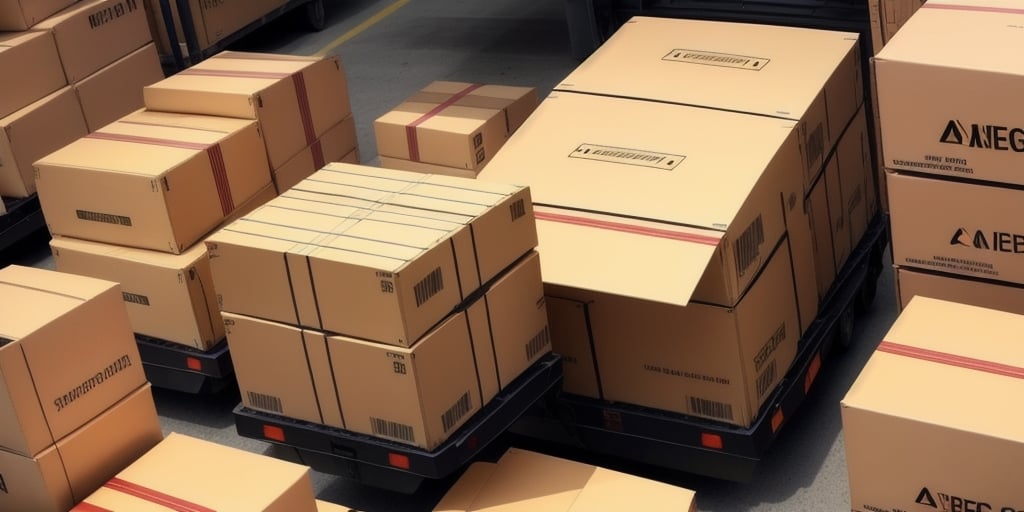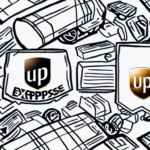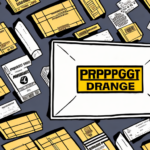Importance of Proper Font Alignment in Dangerous Goods Shipping Labels
When shipping dangerous goods, the alignment of fonts on shipping labels is crucial. Properly aligned fonts ensure that labels are clear and easily readable, which is essential for the safe and timely delivery of hazardous materials. Clear labels facilitate effective communication between the shipper, carrier, and receiver, reducing the risk of misunderstandings that could lead to delays, fines, or accidents.
Proper font alignment also ensures compliance with regulations set by authorities such as the Federal Motor Carrier Safety Administration (FMCSA) and the Occupational Safety and Health Administration (OSHA). Non-compliance can result in significant penalties and legal consequences.
Common Mistakes in Aligning Fonts for Dangerous Goods
Choosing Inappropriate Font Styles and Sizes
One of the most frequent errors is selecting fonts that are either too small or not compliant with regulatory standards. Fonts such as Arial or Times New Roman are recommended for their clarity and readability. According to OSHA guidelines, the minimum font size for shipping labels should be sufficient to be read from a distance of at least 3 meters (OSHA HCS).
Incorrect Placement of Text and Graphics
Improper placement can render labels confusing or illegible. Essential information like the proper shipping name, identification number, hazard class, and packing group must be prominently and accurately positioned. Misaligned graphics or overlapping text can obscure critical information, increasing the risk of mishandling.
Omitting Required Information
Failing to include all mandatory details on the label can lead to shipment delays or fines. Ensure that every label contains all necessary information as specified by relevant regulations. Double-checking labels before printing helps prevent omissions.
Poor Print Quality
Blurry or smudged labels can cause confusion and errors during handling. Utilizing high-quality printers and ink is essential to maintain label clarity and legibility throughout the shipping process.
Step-by-Step Guide to Aligning Fonts in UPS WorldShip
- Open UPS WorldShip and navigate to the Shipping Label Configuration settings.
- Select the appropriate Dangerous Goods Label Template.
- Choose a compliant font style and size, such as Arial, ensuring it meets regulatory requirements.
- Align the text and graphics within the label template for optimal clarity and readability.
- Print a test label on plain paper to verify alignment and clarity.
- Make necessary adjustments based on the test print and reprint if needed.
- Once satisfied, print the labels on high-quality label paper.
- Double-check the final prints for legibility and regulatory compliance.
Different countries may have specific regulations regarding font usage on dangerous goods labels. Research and adhere to the regulations of the destination country to avoid shipment rejection or delays.
Best Practices for Compliance and Readability
Use Clear and Legible Fonts
Select fonts like Arial or Times New Roman that are known for their readability. Avoid decorative or overly stylized fonts that can impede clarity.
Maintain Appropriate Font Size
Ensure that the font size is large enough to be read from a distance. Regulatory bodies often specify minimum font sizes to enhance visibility.
Employ Contrasting Colors
Use font colors that contrast sharply with the label background. For instance, dark fonts on a light background or light fonts on a dark background improve legibility.
Use Bold and Italic Styles for Emphasis
Highlight essential information such as hazard warnings or handling instructions using bold or italicized fonts to draw attention.
Ensure Label Durability
Use durable label materials that can withstand moisture, sunlight, and extreme temperatures to maintain label integrity during transit.
Troubleshooting Font Alignment Issues in UPS WorldShip
- Verify Font Settings: Ensure that the correct font style and size are selected within UPS WorldShip.
- Check Text and Graphics Placement: Confirm that all text and graphics are properly aligned within the label template.
- Optimize Printer Settings: Adjust printer resolution and settings to achieve high-quality prints.
- Perform Test Prints: Print labels on plain paper to identify and rectify alignment issues before using label paper.
- Adjust Font Preferences: In UPS WorldShip, navigate to the “Edit” menu, select “Preferences,” and adjust the “Fonts” tab as needed.
- Contact Support: If issues persist, reach out to UPS customer support for further assistance.
The Benefits of Using Professional Shipping Label Software
Professional shipping label software, such as UPS WorldShip, is specifically designed to align fonts and ensure compliance with dangerous goods regulations automatically. These programs offer customizable templates that adhere to the latest regulatory standards, enhancing label accuracy and readability.
Benefits of using professional software include:
- Efficiency: Streamline the label creation process and print multiple labels simultaneously.
- Accuracy: Reduce the risk of human error by automating compliance checks.
- Integration: Easily integrate with popular shipping carriers for seamless label generation and package tracking.
- Cost-Effective: Minimize the costs associated with shipping errors and label reprints.
Implementing professional shipping software can lead to faster delivery times, fewer returns due to incorrect labeling, and enhanced overall shipping operations.
Choosing the Right Font Style and Size for Your Dangerous Goods Labels
- Clarity and Legibility: Select fonts like Arial or Times New Roman that are easy to read.
- Appropriate Font Size: Ensure the font size is large enough to be read from a distance, complying with regulatory standards.
- Emphasis on Important Information: Use bold or italicized fonts for critical details such as hazard warnings and handling instructions.
- Color Contrast: Choose font colors that contrast with the label background to maximize visibility.
By carefully selecting the right font style and size, you enhance the readability and compliance of your shipping labels, contributing to the safe and efficient transport of dangerous goods.
Ensuring Compliance with Dangerous Goods Regulations
- Use Correct Symbols and Pictograms: Accurately display hazard symbols and ensure they are the correct size and color as per ATSDR guidelines.
- Label Durability: Choose labels that can endure harsh conditions like moisture, sunlight, and extreme temperatures during transport.
- Regularly Update Label Templates: Stay informed about changes in regulations and update your label templates accordingly to maintain compliance.
Adhering to these best practices ensures that your labels meet all regulatory requirements, fostering safe handling and transportation of dangerous goods.
Conclusion
Proper font alignment is vital for the safe and timely delivery of dangerous goods. By following the step-by-step instructions and best practices outlined in this guide, you can ensure that your shipping labels are compliant, clear, and effective. Always use high-quality label paper, optimize your printer settings, and perform test prints to verify alignment before finalizing labels. Investing time in proper font alignment not only enhances regulatory compliance but also improves the overall efficiency and reliability of your shipping operations.




















